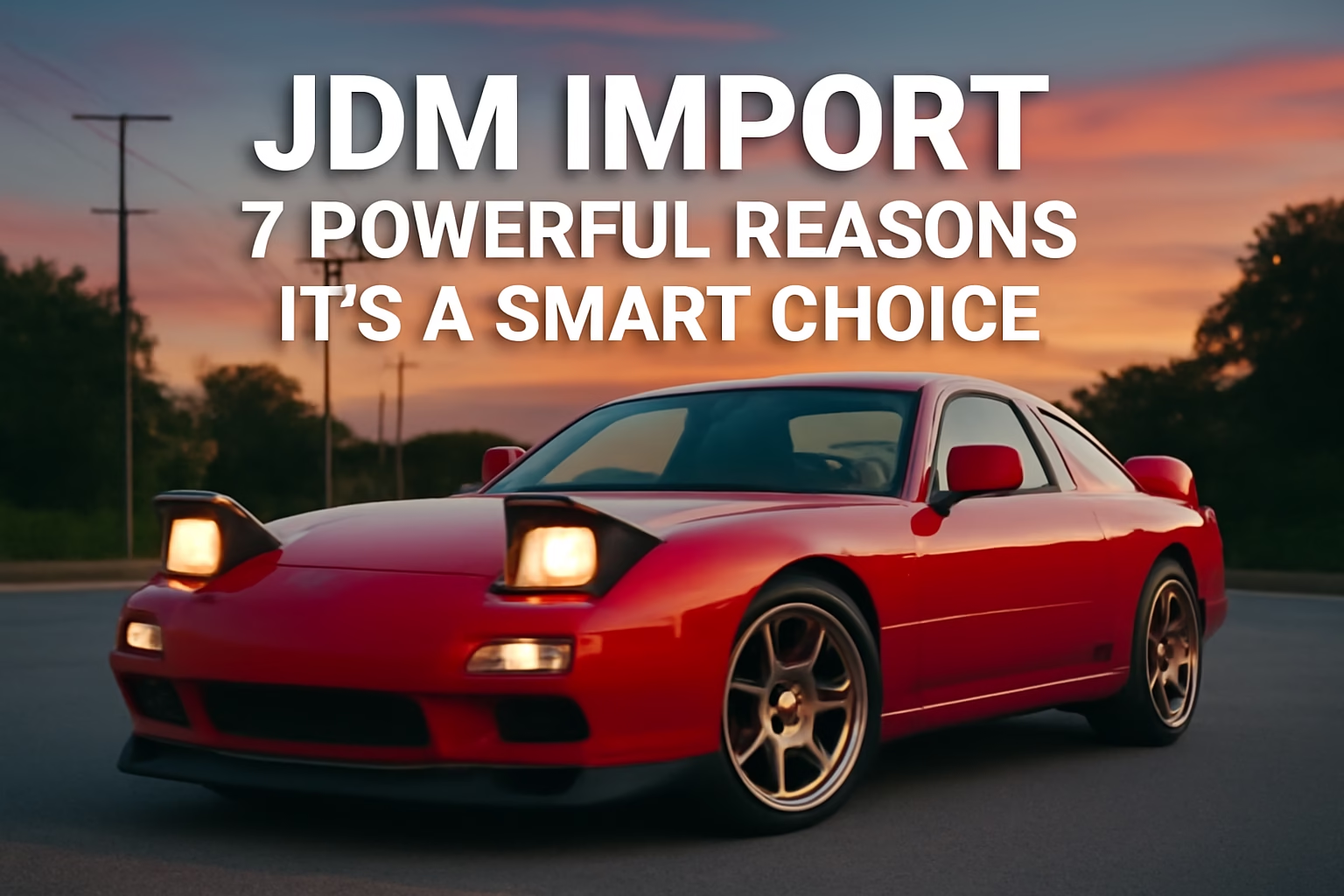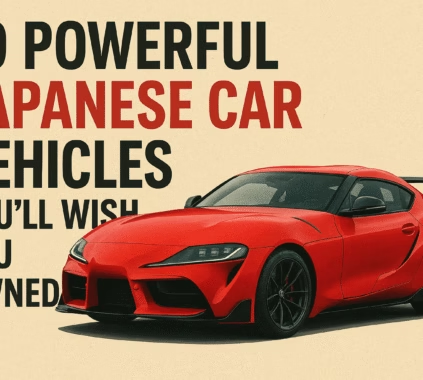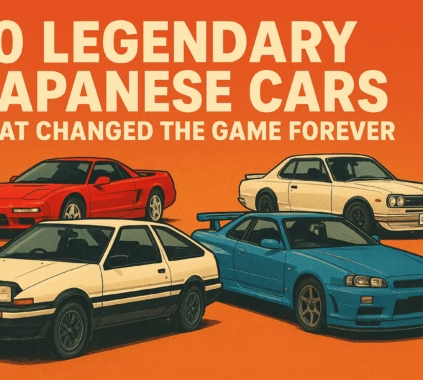The world of car lovers is huge, but few things spark the same excitement as the Japanese Domestic Market, or JDM.
Table of Contents
For years, cars made only for Japan have grabbed the attention of fans everywhere because they combine eye-catching looks, cutting-edge tech, and race-ready performance.
Owning a true JDM import is more than a cool status symbol it’s a passport to a deep automotive culture.
If you’ve ever double-tacked at a right-hand-drive coupe or a one-off oddball van, you’ve already caught the fever.
A core question for any enthusiast is whether tracking down a JDM Import car is worth the effort not just a trend, but a strategic choice.
For the right buyer, pursuing a JDM import gives access to exceptional engineering, unique driving experiences, and value that can eclipse conventional options.
This isn’t just for show; it’s a decision that can deeply reward those willing to take the plunge.
This guide will break down seven compelling reasons why buying a JDM import is a rewarding move for enthusiasts.
From specialized engineering and performance to the richness of the fan base and possible investment returns, you’ll see why these distinctive Japanese models can be a smart addition to your garage and not just another collector’s whim.
1. Unmatched Engineering and Reliability
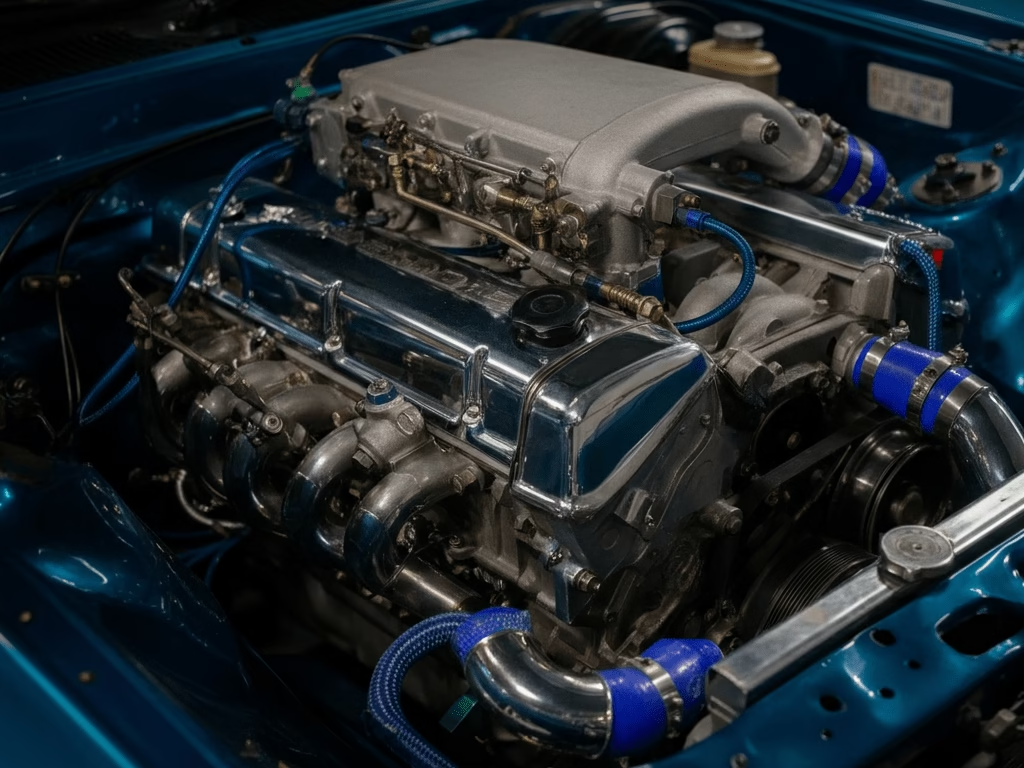
Japanese car makers are known worldwide for turning out some of the most dependable vehicles ever.
That focus on quality is even tighter for the models sold only inside Japan. When you see the JDM Import label, it means the car was made by a Japanese company, built in Japan, and sold only in the local market.
These models are built to handle the high expectations of Japanese buyers and to pass some of the strictest rules in the world.
The result is a level of engineering that often beats what you’ll find in models meant for global markets.
During the late 80s and 90s boom years, Japanese automakers poured resources into research and development like no other.
This golden age gave us powerhouse engines like Toyota’s 2JZ-GTE, Nissan’s RB26DETT, and Honda’s B-series VTEC.
All of these were over-engineered constructed with top-tier materials and super-tight tolerances so they could handle big power bumps with only a few added parts.
When you sign on the dotted line for a JDM import, you’re not just getting a car you’re tapping into that engineering legacy, which sets the stage for even more reasons these cars are in a class of their own.
Built for More Than They Say
Many JDM engines were secretly rated for serious performance above their factory numbers.
A polite “gentleman’s agreement” between the brands kept claimed power at 276 hp (280 PS) or thereabouts.
The truth, however, is that most of these engines were finished to endure considerably more, turning them into gold mines for tuners.
Every Part Ticks Up a Notch
The JDM Import versions of these cars often boast premium parts not offered in export models. Look for beefier engine internals, more efficient turbos, smoother-flowing intake and exhaust systems, and stronger gearboxes.
All these extras mean you start with a higher baseline of quality, making upgrades easier down the road. The legacy is there, waiting for the next enthusiast.
Rigid Inspection Rules
Japan has a vehicle inspection called “Shaken,” and it’s one of the toughest in the world. To keep a car on the road, it must be in perfect shape.
This means that the used cars you’re thinking of importing probably got careful care their whole lives.
Buying a JDM import often means you’re driving a car that came from the factory with stricter quality control.
This builds a more reliable and longer-lasting vehicle, whether you want it as-is or plan to soup it up.
2.Discover Special and Fast Models

One of the best reasons to go for a JDM import is the chance to grab cars that were never sold in North America or Europe.
Sure, we got some great Japanese rides, but the legends those models everyone dreams of stayed in the Domestic Market.
By choosing a JDM Import vehicle, you move beyond ordinary options and into driving rare, ultra-cool machines that spark conversations and admiration around every corner.
This exclusivity leads naturally to their legendary status, as explored next.
Think back to the absolute JDM legends. The Nissan Skyline GT-R trilogy, the R32 through the R34, reigned as the ultimate import fantasy long before anyone dreamed of registering one on U.S. soil.
Each GT-R packed the genius of ATTESA E-TS all-wheel-drive and the mythic RB26DETT twin-turbo heart.
In the same orbit, the Mitsubishi Lancer Evolution IV, V, and VI dished out a bone-raw, rally-honed driving vibe that the U.S.-bound Evos could only eye through a glass window.
The trove of JDM-only jewels is practically a novel of speed and style:
- Performance Crown Jewels: In Japan, the Honda Civic and Integra Type R variants always flaunted a nifty dose of extra horsepower, a keener appetite for diet, and a harder-edged suspension compared to their overseas cousins. The very first NSX-R is the poster child for a Japan-only miracle lighter, stripped, and purpose-built for track glory.
- Luxury with a Twist: Roll up in a Toyota Century, and the V12 under the hood silently reaffirms that Japanese opulence is one-of-a-kind, with no chance of finding it on foreign docks. Meanwhile, the Toyota Aristo served as the home-team twin to the Lexus GS. Yet only in the Land of the Rising Sun could buyers choose it with the all-star 2JZ-GTEjust one more forbidden gem that never crossed the ocean.
3. Kei Cars and JDM Imports More Than Just J-Pops and Speed
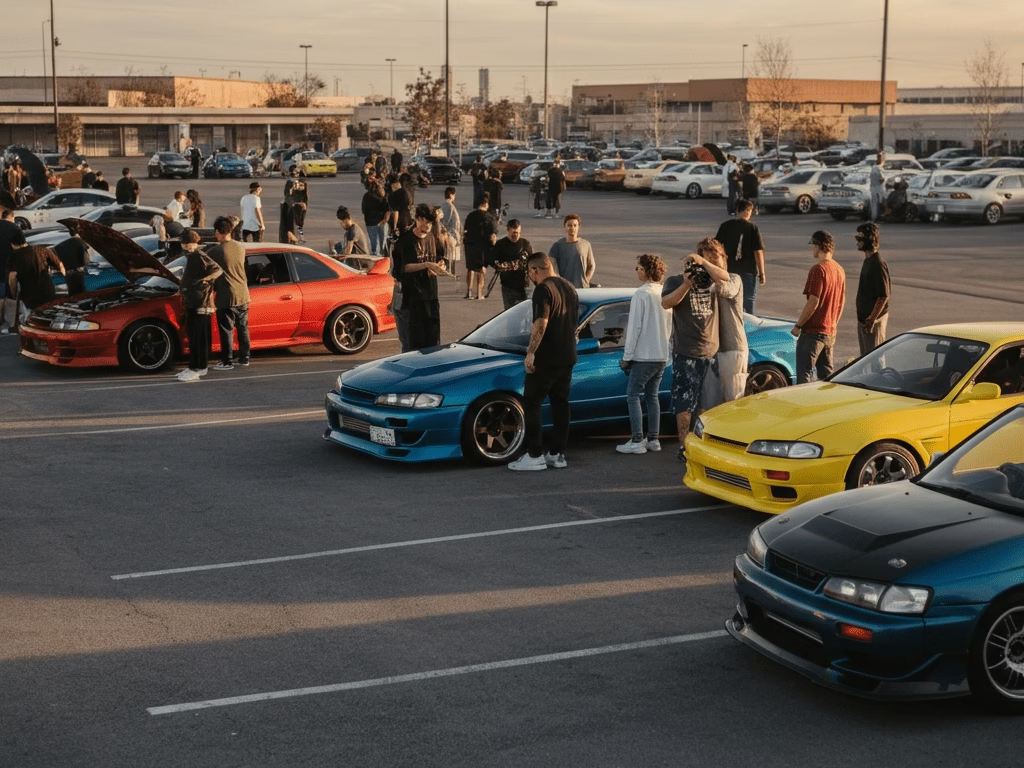
Japan isn’t just about flashy sports cars when you dive into JDM cars. Check out the Kei car scene.
Models like the Suzuki Cappuccino, Autozam AZ-1, and Honda Beat pack monster fun into adorable, ultra-compact packages.
These tiny micro-sportsters go beyond auto-fun they bring you drive-in-a-retro-time capsule vibes.
Step up to JDM vans, and the Mitsubishi Delica 4×4 and Toyota HiAce steal the show. Utility, comfort, and surprising off-road chops aren’t even on the radar of U.S. family haulers.
These people vehicles prove Japan can think way outside the “econobox” box.
Own the Dream
When you import, you don’t just “own” a car you inherit legends. Think of those moments spent admiring Nissan Silvia S15 curves or daydreaming about drifting the Toyota Chaser JZX100.
The Subaru Impreza 22B STi likely coloured your teenager’s bedroom walls. Once these cars are part of your life, the experience expands beyond the garage.
Next, we’ll see how it connects you to a global family of enthusiasts.
A Global Family of Gearheads
Buying an import isn’t just a purchase; it’s a VIP–lifetime–invite to one massive, international family.
Ask a question, swap a part, or track down a 22B badge; someone, somewhere on the planet is on it, because Japanese car culture swims beyond borders like a drift-cloud.
Online forums, Instagram reels, roadside barbecue meets your fellow import geeks surround your ride with respect, knowledge, and more memes than you can shake a racetrack at.
Online Forums and Social Media
Websites like GTR Forum and dedicated Facebook groups for specific models like Silvia, Chaser, and Delica are full of gold for JDM lovers.
Scroll through the threads and you’ll quickly spot fixes for annoying issues, step-by-step mod guides, and folks all too eager to help you keep that rare beauty running smoothly.
This pool of shared know-how turns the headache of owning an uncommon car into a fun team effort.
Local Car Meets and Shows
JDM rides are a scene-stealer anywhere there’s asphalt.
Dropping by a local “Cars and Coffee” or a full-blown JDM car show is one of the best ways to link up with fellow enthusiasts.
You’ll check out all sorts of builds, swap tips over coffee or snacks, and soak up fresh ideas for your own setup.
These meet-ups aren’t just fun; they make the car community feel like one big, supportive garage.
4.Specialist Shops and Tuners
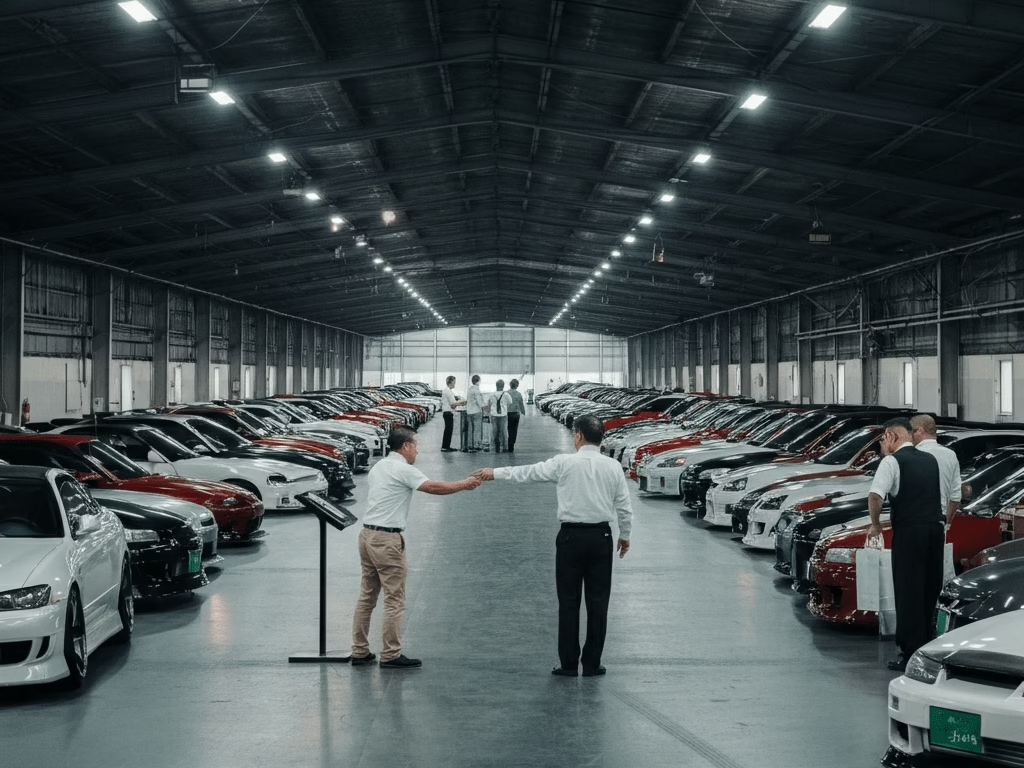
As the JDM import craze keeps growing, so does the number of shops and tuners that live and breathe these cars.
These pros offer everything a gearhead need soil changes, suspension swaps, or even a full engine rebuild using know-how that’s specific to your model.
If you find a mechanic who’s as fired up about JDM masterpieces as you are, you’re already one step closer to keeping your ride in top condition and slicing through repairs like a pro.
Having a network of owners around you makes keeping a JDM classic far more fun. If you hit a snaglike a noisy axle someone online has a step-by-step video or guide.
With this support, what could have been a hassle turns into a community victory, setting up our look at value and affordability of JDM imports.
When you step back and compare, the value proposition of JDM imports becomes even clearer.
While TV-show superstars like the R34 Skyline and the MK4 Supra have seen skyrocketing prices, there are still dozens of other imports that remain affordable and have shown steady or increasing appreciation.
Well-cared-for sports coupes, plush sedans, and quirky daily-drivers can represent sound investments that may outpace depreciation typical of domestic models.
The magic really happens thanks to the “25-Year Rule.” Each calendar year, an entire crop of classic Japanese gems becomes eligible for import, often sparking a surge of interest and value appreciation around these cars.
As more enthusiasts enter the market, prices can peak before settling into a favourable range, giving patient buyers a unique investment window.
In Canada, more relaxed import timelines also create early opportunities to purchase JDM models that may soon gain value.
Here’s where a JDM (Japanese Domestic Market) import really gives you the most bang for your buck:
- Greater Performance for Less Money: A JDM import often packs the kind of horsepower and handling that you’d pay a small fortune for in a new or local car. Take a good-condition Toyota Chaser Tourer V with the turbocharged 1JZ-GTE. You can import one for nearly the same price as a boring modern sedan, and it’s a whole different level of fun and speed behind the wheel.
- Low Price Tag Because of Japan’s Rules: Japan has tough “Shaken” inspections, and most car owners prefer brand-new rides. That means older models lose their value very fast. Even after you add shipping, import duties, and the cost of making the car legal in your country, the total ends up way lower than you’d expect.
- Dodge the “Drift Tax”: When a car gets famous in the drifting scene (think Nissan 240SX here in the States), local versions are often dented, flimsy, and priced way over the top what the memes call “drift tax.” Grabbing a clean, stock Nissan Silvia S13 or 180SX directly from Japan gives you a way better foundation for your project without overpaying.
When you browse the full range of JDM imports, you’ll spot options that serve up an incredible driving experience without emptying your wallet.
It’s almost like a cheat code for getting a better-performing vehicle for less cash.
5. Possible Investment Upside
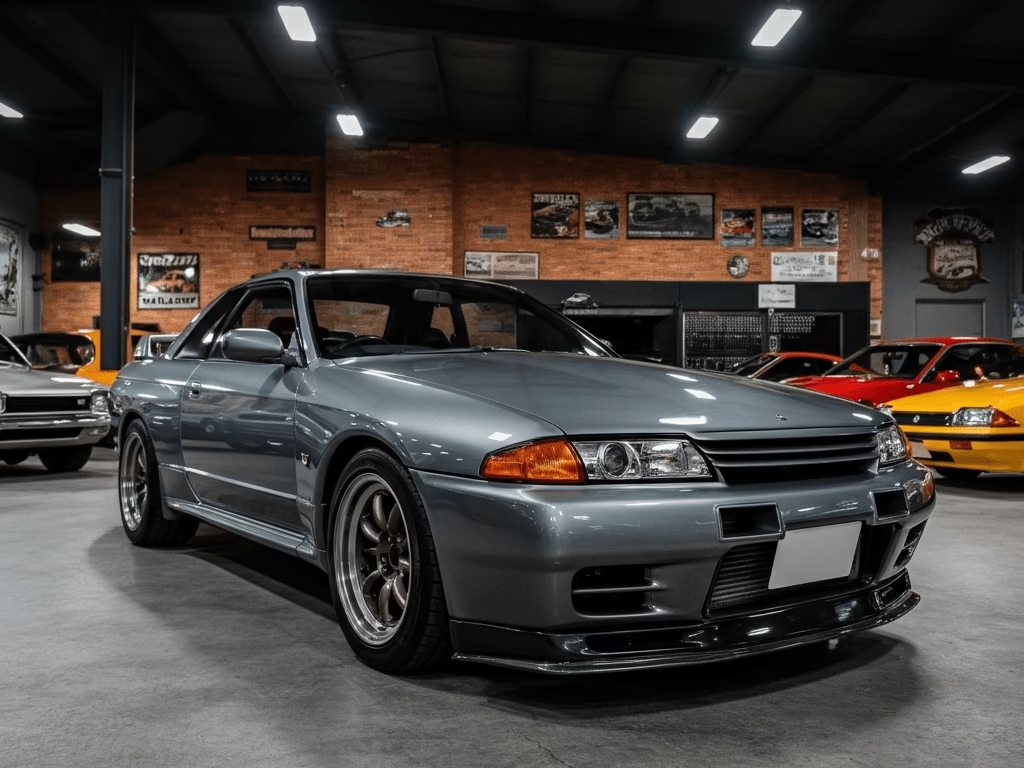
Some of these imports do more than just move you from A to B they also build wealth. Sure, the main reason to recommend a JDM ride is the excitement of owning one, but the fact that many of these cars are currently appreciating in value is a bonus you can’t ignore.
Over the last ten years, the market for these vehicles has steadily climbed, with plenty of models getting notably more valuable.
Why is this? At the core, it’s pure supply and demand. Classic JDM cars are becoming scarce.
Production of many of them ended years ago, and as the years roll on, crashes, neglect, and regular wear and tear are eating into the inventory of well-kept, all-original models. Meanwhile, demand is on the rise.
Fans who once cheered these cars in movies, anime, and franchises like Gran Turismo are now old enough to book the cash to drive their childhood fantasies.
Several key factors can boost the investment appeal of a JDM import:
- Scarcity and Desirability: Limited-edition runs and high-performance versions think Nismo or STi badges usually rank at the top of collector wish lists. The fewer of a model you can find, the more likely its market price will rise, making these cars smart purchases for future value.
- Generational Nostalgia: The “Gran Turismo generation” has become a driving force behind skyrocketing prices. Enthusiasts are revisiting the cars they grew up idolizing on racing sims, so models that featured prominently, like the R32 Skyline GT-R, have gone from garage bargains to sizable assets almost overnight.
- Global Market Dynamics: Easing import regulations in various nations mean that the world’s best JDM icons are now open to a larger buyer base. That rising army of international collectors is often bidding on the same limited pool of cars, which inevitably gives prices a sturdy boost. For detailed, data-backed market insights, sites like Hagerty’s Valuation Tools are worth checking out.
Buying a carefully cared-for, sought-after JDM import can make sense for your wallet.
This isn’t a guarantee that your investment will skyrocket, but if the car keeps or even rises in value, your hobby starts looking a lot like a decent savings account.
The secret is picking a standout model that everybody wants and giving it the upkeep it deserves.
6. The Real JDM Buzz
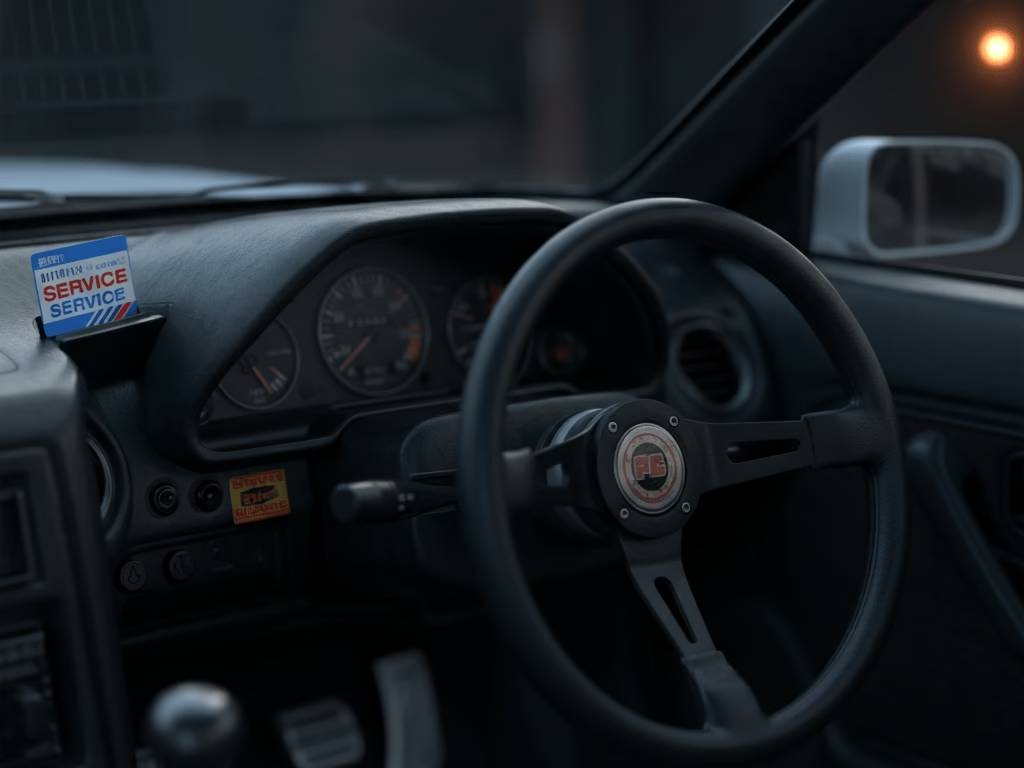
There’s a feeling in a true Japanese-market car that an overseas model just can’t match. You’re driving what the folks who built it meant for their own neighbourhoods.
This vibe comes through in the big stuff different engine codes, for example and in tiny, almost secret details that whisper “local, not tourist.”
Sliding behind a right-hand-drive (RHD) wheel is part of the whole vibe. Sure, at first it feels weird, but most folks are driving in the groove within a couple of trips.
The stick swap from right to left goes from awkward to automatic, and the whole cabin shifts your viewpoint just a bit, like a well-cut lens for your daily commute.
It’s an everyday nudge that whatever you’re piloting is anything but ordinary.
The real charm of a JDM import is in the little details:
- Original Specs: Your car will have the factory engine map, the exact suspension tuned for narrow Japanese roads, and the features that only make sense to local drivers. This could mean a livelier throttle response, a stiffer ride, or options such as power-folding mirrors and automatic climate control that we never got in the States, even on models that share platforms and badges.
- Cultural Finds: JDM cars often show up with the small, quirky traces of daily life in Japan. Peek inside the fuel-filler door and you might see a color-coded maintenance sticker from the last dealer visit. Check the card slot for that little ETC card that lets you zoom through toll gates, or thumb through the glove box for a set of neatly folded train maps and a few coins that have travelled a thousand commutes.
- Vintage Accessories: Many vehicles arrive with Japanese aftermarket gear that collectors drool over, all in a tidy, period-correct package. You could come across lightweight wheels from Work, SSR, or Volk Racing each with a patina that says, “I was on the show circuit in the early 2000s” or a pair of old-school dash gauges and a turbo timer from Blitz or Greddy that were once the envy of the overnight car meets in Tokyo.
Getting in a JDM import is a trip that never gets routine. You don’t just fire up the engine and cruise; the whole car invites you to step into another car-loving world.
The engine note, the fabrics, even the faint whiff of treated leather or plastic everything signals you’ve crossed a cultural border that stretches from the production line to a skyline-shaped skyline.
7.Your Personal Blank Canvas
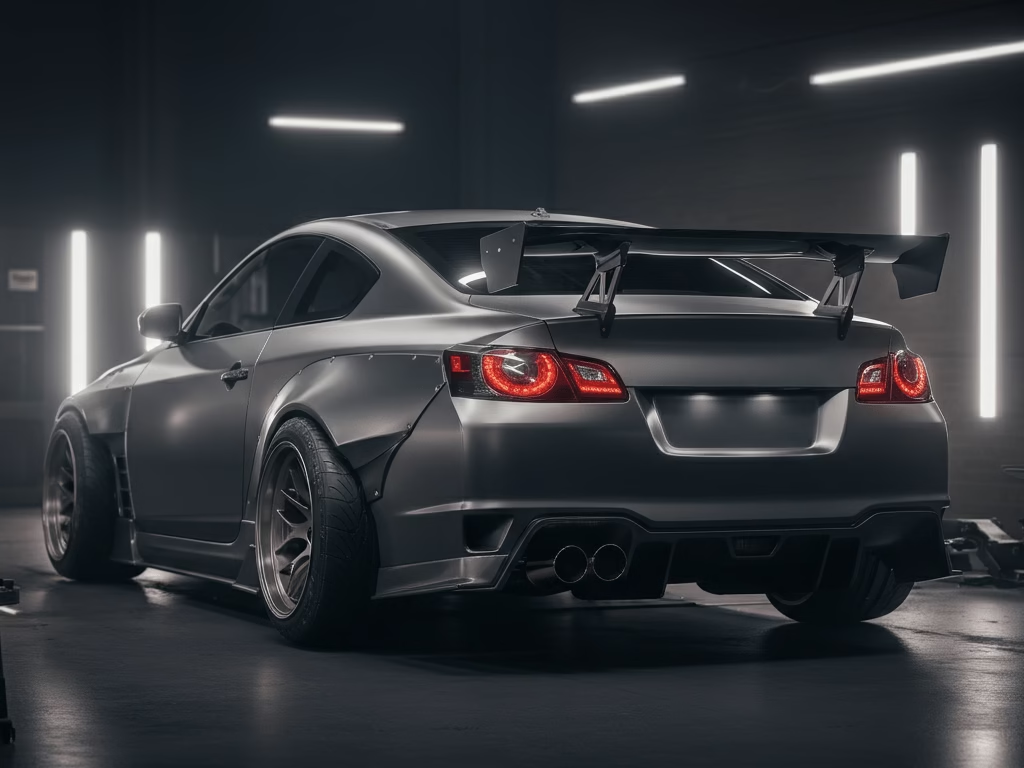
A lot of folks go for JDM imports just to keep the factory look and feel, but just as many want a car that’s basically a canvas waiting for a custom mural.
Japan’s tuning innovators never wowed the world with flashy ads they wowed it with parts that practically redefine what a stock car can do.
From HKS to Spoon Sports, those brands have fed JDM platforms the kind of upgrades that colour the world of racing.
Don’t think of parts as add-ons see them as extensions of your style.
You can pick killer coil-overs for that sharp track stance, a feather-light wing to keep triple-digit speeds grounded, or seat rails that put you flared-helmet-ready in next to no time.
Mikado Plate Stacks and Gravy
The aftermarket community is so vast and so sharp, that it feels like flipping through a racing version of a Michelin guide.
Fuel pumps, exhaust manifolds, even custom blends of synthetic oils have been graph-papered and track-tested over there.
Sites like MotorTrend’s tuning section dig into the nitty-gritty, so you can gum-shoe a combo from a national GTR Star and a Tokyo spray-artist in five minutes flat.
Fuel that, pair it with your vision of ride height, a splitter someone’s cousin hand-baked out of forged carbon, and guess what your import is another masterpiece in progress.
Diverse Styling That Speaks to You
The JDM import scene is all about showing off your own style. You’ll spot everything from over-the-top Boso Zoku aero kits that scream “I own the street” to sleek VIP Style sedans dressed in classy decals.
Then there are the Kanjo racers who strip it down to the essentials think tight coils and razor-sharp angles for corner-hunting.
No matter your vibe, there’s a faction that feels like home. That wide-open canvas lets you build a ride that’s 100% you, not a carbon copy of the next car.
Tough Bones for Big Goals
Earlier we talked about those stock superstars that come with stout guts right from the factory floor.
Starting with a 2JZ-GTE or RB26DETT is like having a cheat code; you get bulletproof engines and strong drivetrains.
That means you can layer on the horsepower with confidence, whether the target is 400, 600, or 1,000 horsepower.
Meanwhile, someone who starts with a U.S. naturally aspirated coupe is playing dice with every upgrade.
Your stock JDM import is already built for the big leagues, saving you headaches and giving you more room to dream.
You can leave that fresh glass imports untouched and bask in originality, or you can swap every bolt for custom perfection.
Abundant aftermarket parts and industrial-strength factory engineering back you either way.
In other words, from mild to wild, the platform is your blank check to build the ride that lives inside your mind.
Conclusion
Choosing a JDM import isn’t just buying a car; it’s an adventure that delivers thrills beyond the driveway.
It’s a smart move, supported by real-world benefits. These vehicles are made with exceptional engineering and a level of durability that’s hard to beat.
They include unique, high-power models that never made it to other markets, giving you a ride that stands out in any crowd.
The numbers keep backing the choice, too.
You get jaw-dropping performance without a jaw-dropping price tag, and some of these gems are likely to gain value over time, turning a joy ride into a smart investment.
You’ll also dive into a worldwide fan base that shares tips, swap parts, and brag about the same rare models.
From the true right-hand-drive thrill to the endless upgrade options, a JDM car suits every kind of gearhead.
So, if you’re ready to own a slice of automotive legend that pumps adrenaline every time you start the engine, taking a closer look at JDM imports is a move that rewards you in speed, satisfaction, and smiles.

